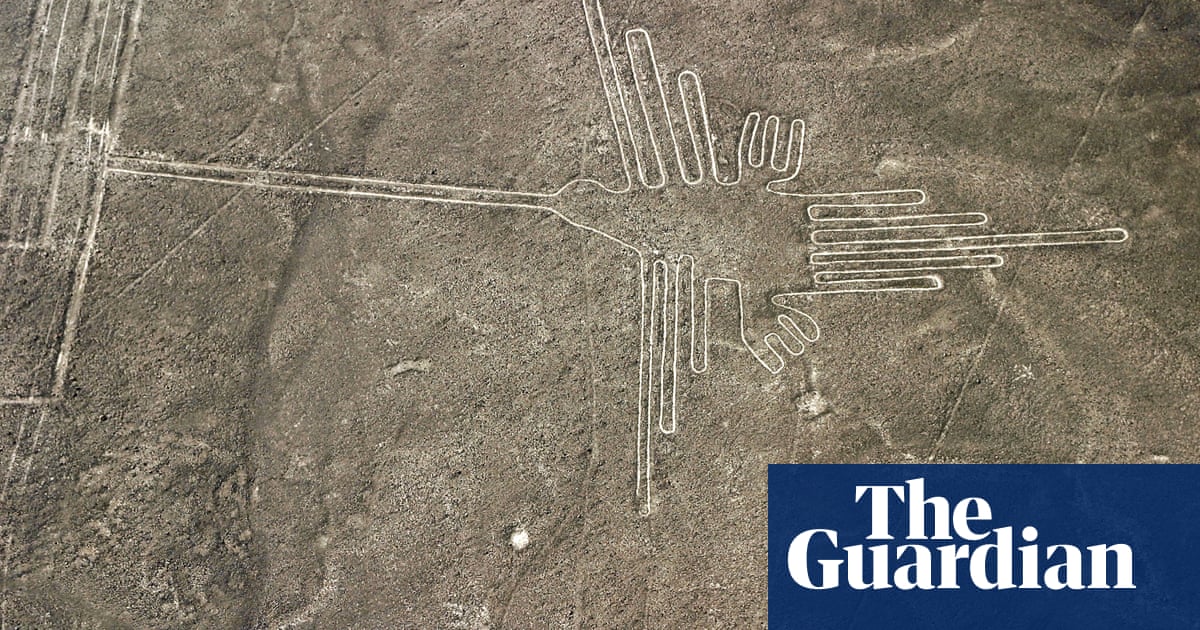Archeologists and environmentalists have expressed their outrage at a shock decision by Peru’s culture ministry to cut by nearly half the protected archaeological park around theiconic Nazca Lines, excluding an area nearly the size of urban Lima, the country’s capital city.
The Unesco world heritage attracts thousands of tourists to see the massive hummingbird, monkey and whale figures in the desert in Peru’s second-biggest tourist attraction after Machu Picchu. Last year, archaeologists using AIdiscovered hundreds of new geoglyphsdating back more than 2,000 years, predating the famous lines in the sand.
“They are trying to rub out history,” said Ana María Cogorno Mendoza, president of the Maria Reiche International Association, a non-profit created to protect the Nazca Lines. “The area that is being separated is exactly where some of the oldest rituals took place, according to our research.” Maria Reiche was a German-born mathematician who pioneered research on the Nazca Lines in the 20th century.
Critics of the move say it will weaken decades of environmental protection and open up the Nazca Archaeological Reserve toinformal and illegal mining, just as international gold prices peak.
Peru’s culture ministry, which decided on Friday to reduce the Nazca reserve from about 5,600 sq km to roughly 3,200 sq km, said the decision was the result of a 20-year study and consultation and did not affect the Unesco World Heritage destination or its buffer zone.
“There has not been enough study to say it has no cultural or archeological value,” said César Ipenza, an environmental lawyer who has closely followed the decision-making in the case.
“This area, which belongs to our ancestors, requires real protection and not just political expediency.”
Luis Jaime Castillo, a former culture minister and an archeologist who has studied the geoglyphs said the protected area was already “infested with illegal mining and mineral processing plants”.
Sidney Novoa, the technology director at NGO Amazon Conservation, who has mapped the site, said the area now excluded from the protected archeological zone amounted to more 2,000 sq km and was overlapped by some 300 concessions owned by miners on a controversial registry of informal miners purportedly in the process of formalising their operations, known as REINFO.
Ipenza said the registry allowed illegal mining to continue with impunity and without state oversight, adding that the government favours mining over environmental protection.
The move “exposes [the reserve] to a very serious risks and cumulative damage”, said Mariano Castro, a former environment minister. “The ministry of culture is not considering the expansion of hundreds of extractive mining activities that will cumulatively impact the existing sensitive archaeological zones in Nazca.”
“This update responds to the need to more accurately reflect the relationship between the geoglyphs and the physical features recorded in the area, ensuring their protection and preservation,” Fabricio Valencia, Peru’s culture minister, told national radio on Saturday.
